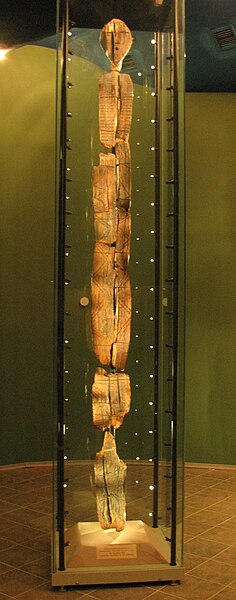Scandinavian Hunter-Gatherer
In archaeogenetics, the term Scandinavian Hunter-Gatherer (SHG) is the name given to a distinct ancestral component that represents descent from Mesolithic hunter-gatherers of Scandinavia. Genetic studies suggest that the SHGs were a mix of Western Hunter-Gatherers (WHGs) initially populating Scandinavia from the south during the Holocene, and Eastern Hunter-Gatherers (EHGs), who later entered Scandinavia from the north along the Norwegian coast. During the Neolithic, they admixed further with Early European Farmers (EEFs) and Western Steppe Herders (WSHs). Genetic continuity has been detected between the SHGs and members of the Pitted Ware culture (PWC), and to a certain degree, between SHGs and modern northern Europeans. The Sámi, on the other hand, have been found to be completely unrelated to the PWC.
Reconstruction of a circa 7,000 BP Scandinavian Hunter-Gatherer by Oscar Nilsson, Trelleborgs Museum.
The Mesolithic or Middle Stone Age is the Old World archaeological period between the Upper Paleolithic and the Neolithic. The term Epipaleolithic is often used synonymously, especially for outside northern Europe, and for the corresponding period in the Levant and Caucasus. The Mesolithic has different time spans in different parts of Eurasia. It refers to the final period of hunter-gatherer cultures in Europe and the Middle East, between the end of the Last Glacial Maximum and the Neolithic Revolution. In Europe it spans roughly 15,000 to 5,000 BP; in the Middle East roughly 20,000 to 10,000 BP. The term is less used of areas farther east, and not at all beyond Eurasia and North Africa.
Reconstruction of a "temporary" Mesolithic house in Ireland; waterside sites offered good food resources.
The Mesolithic begins during the latest Pleistocene, characterized by a progressive rise of temperatures, between the end of the Last Glacial Maximum and the Neolithic Revolution during the Holocene. Evolution of temperature in the Post-Glacial period according to Greenland ice cores.
Mesolithic artifacts
The Shigir Idol, from the east of the Ural mountains.





